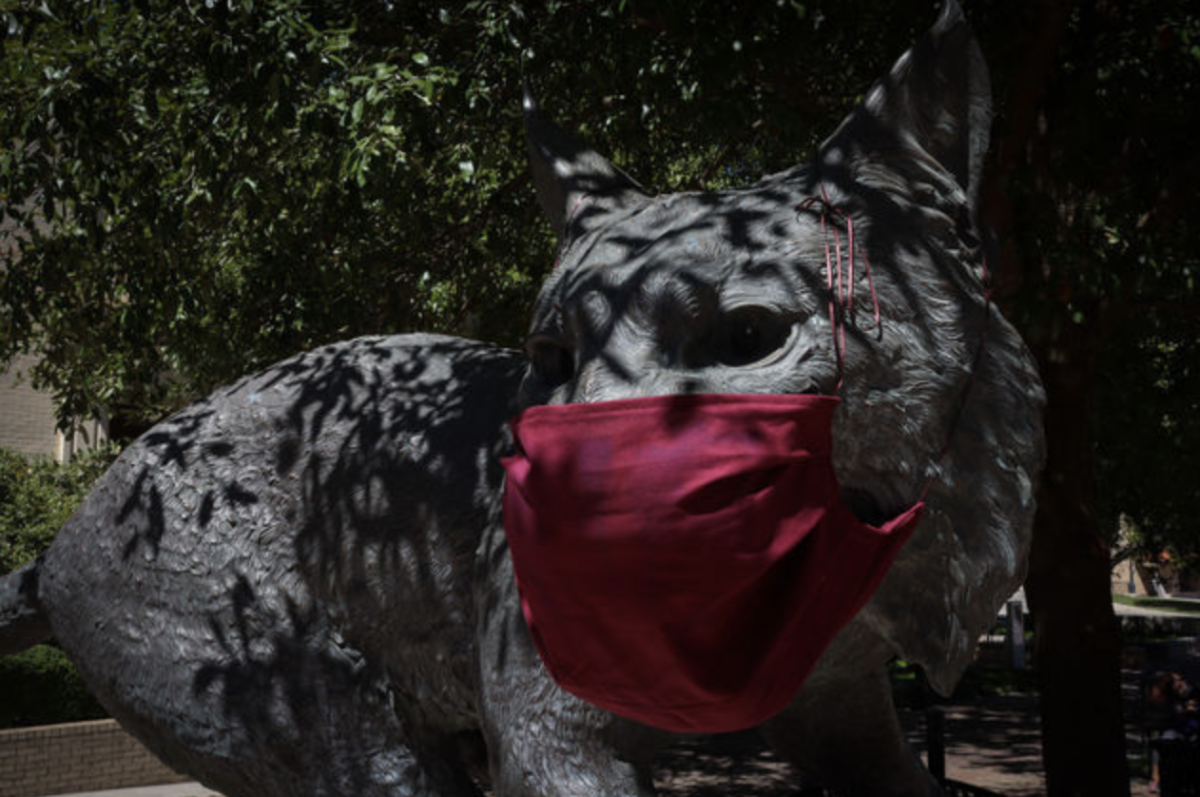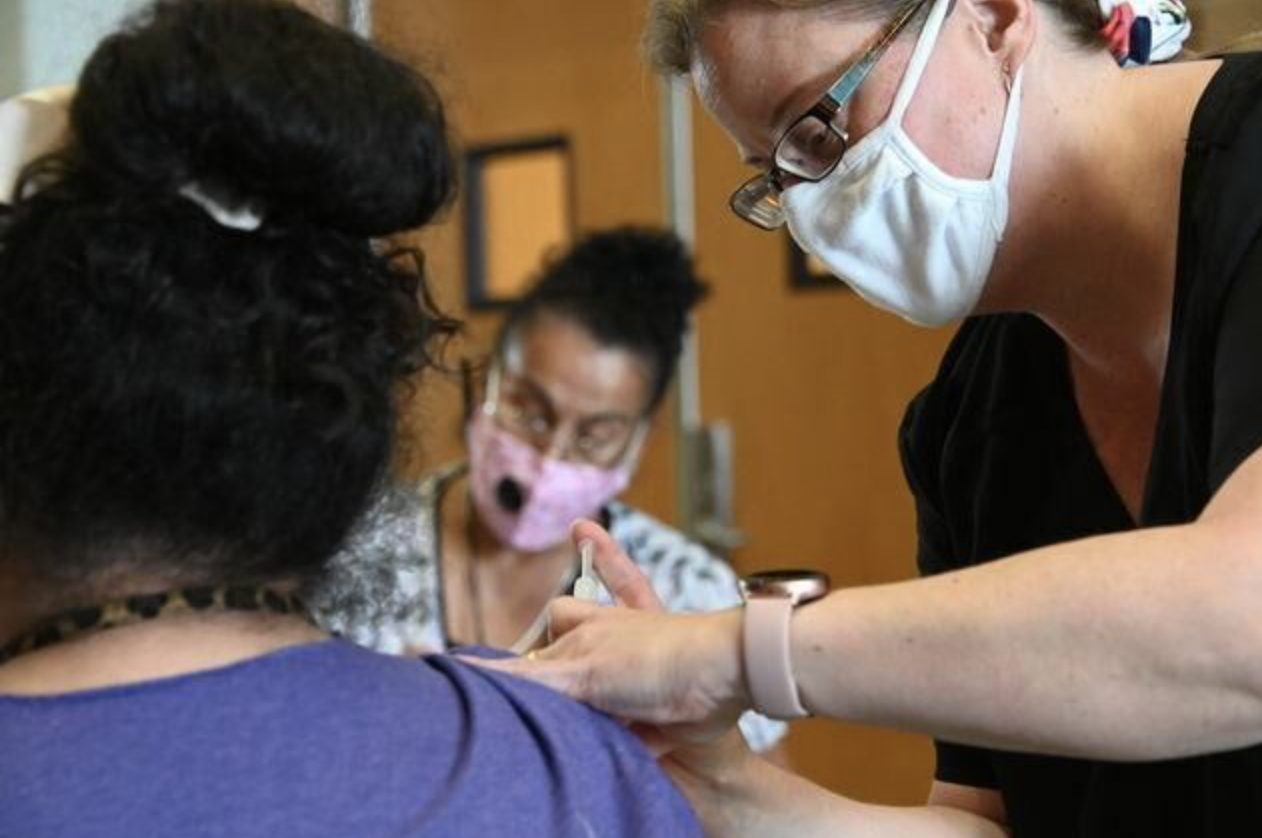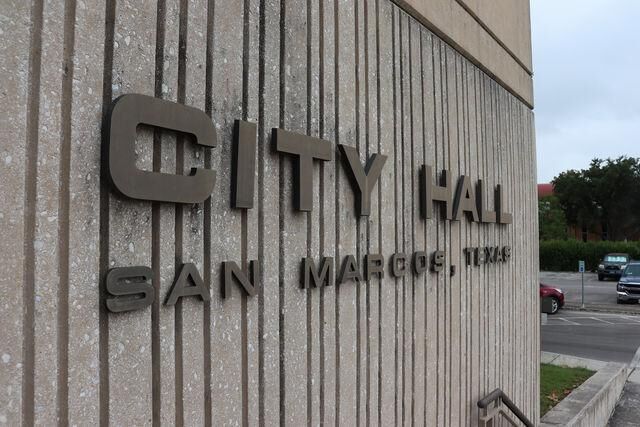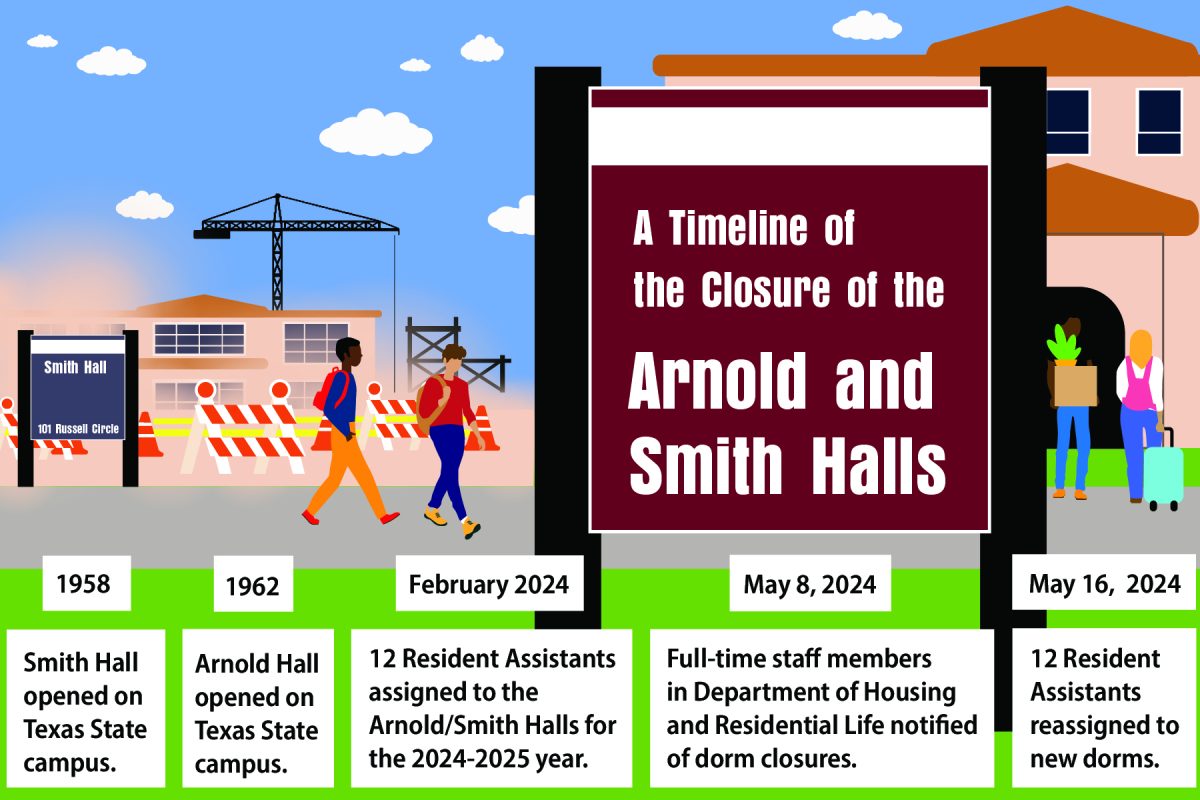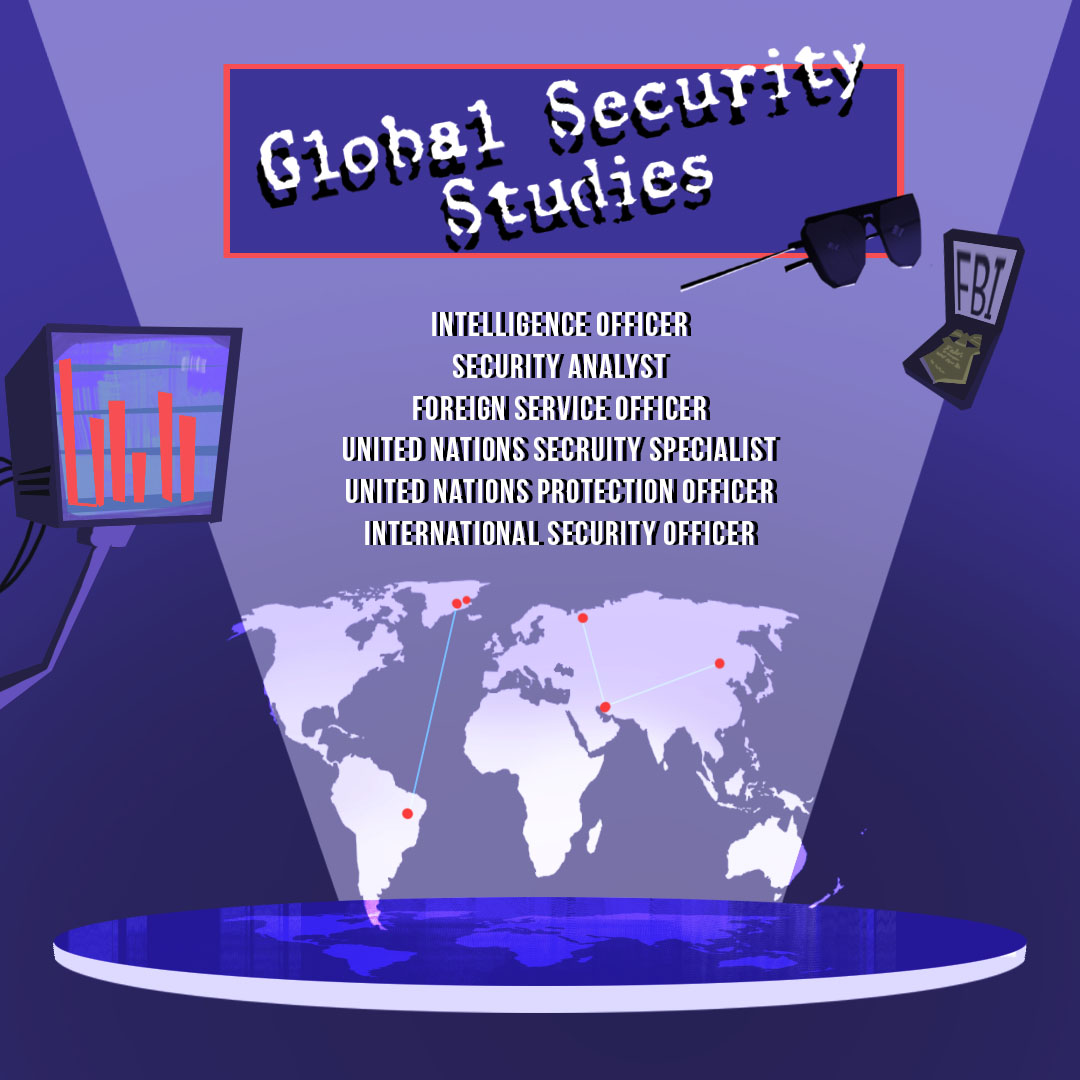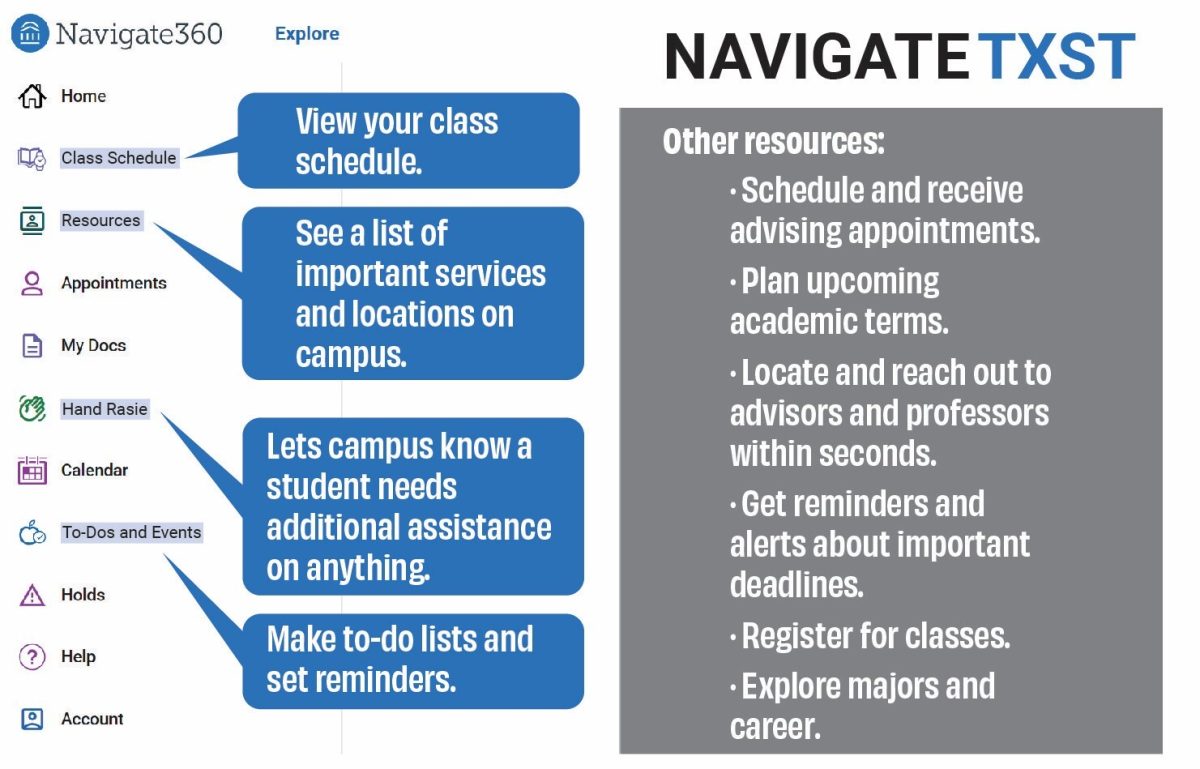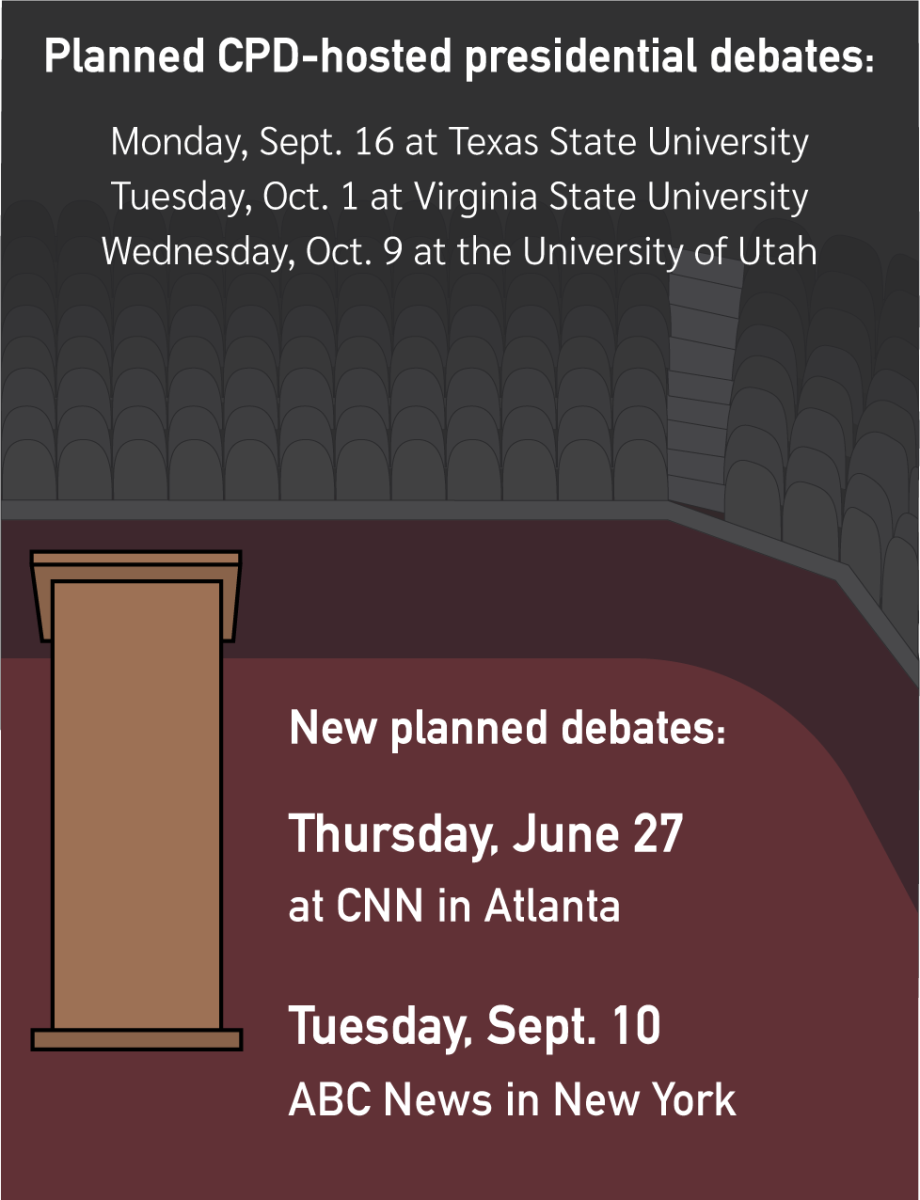As the pandemic enters its third year, Texas State Bobcats and university officials have since adjusted to new roles and a new normal.
Dr. Emilio Carranco, assistant vice president and director of the Student Health Center, saw his job shift to more of a public health role these past two years. He began paying attention to any emerging public health threats, and by January 2020, it was clear that the virus outbreak in China posed a potential problem.
In response, Dr. Carranco met with the university’s administration to discuss the development of a COVID-19 response plan which was first implemented in February 2020.
The response plan included strategies to prevent greater infection within the university by using Bobcat Trace, contact tracing and math as tools to reduce the spread.
“I was part of that initial committee here at the university that was looking at all the information that was available from the medical groups, from the CDC, from our own review of the scientific information that was starting to come out about Coronavirus,” Dr. Carranco said.
By using scientific information, and doing its own review, the university further enhanced its response to COVID-19.
As director of the Student Health Center, Dr. Carranco was responsible for leading the effort to create a university contact tracing team.
“We were tasked with putting together a contact tracing team and developing the Bobcat Trace reporting tool to allow us to track positive cases on our campus, and to allow us to be able to get information out to people who had been infected and those who had been exposed,” Dr. Carranco said.
Dr. Carranco faced new challenges as the pandemic took a toll on the Student Health Center. These difficulties caused a higher rate of retirement and need for more absences. This resulted in staff working long hours on weekends and giving up spring break.
“It was a combination of retirement, really loss of funding, because so many students were online and off campus,” Dr. Carranco said. “And it was the effect of the pandemic on our staff. We were on the front lines. We were taking care of sick people.”
Dr. Carranco explained that eventually, virtual services became available throughout various departments at Texas State including the Counseling Center, Career Services and the Student Health Center. The Student Health Center heard positive feedback from patients that liked virtual health care and appreciated telehealth services.
“We learned that we could actually provide healthcare through telemedicine,” Dr. Carranco said. “And in some cases, that was a really significant benefit to some of our students who couldn’t drive to the health center or were not on campus.”
While the virus is stretching into its third year, pandemic fatigue has set in and it has become difficult to sustain prevention measures for such a long time. Dr. Carranco explained that despite feelings of exhaustion, now is not time to stop using prevention tools such as masks, testing and vaccination.
“COVID-19 is not going away,” Dr. Carranco said. “Yes, it’s better right now, but we experienced the same thing last year. The safest way to protect yourself now and in the future is to vaccinate.”
The pandemic also took a toll on the social atmosphere of campus as social distancing became enforced in classrooms, residence halls and university events. Rae Macha, program director for the Alumni and Future Student Welcome Center, worked to adapt to new regulations as the pandemic progressed. Macha explained that her staff never closed during the state lockdown and created a safe environment to help guide visitors on campus.
“We had to really strategize on how to keep people safe here,” Macha said. “We created a driving tour option so that people could drive around our campus and see videos that would pop up a tour guide.”
Macha’s staff at the Student Welcome Center made sure to follow mandates and emphasized cleaning to prevent the spread of the virus. This included limiting interactions and doing her best to keep a positive environment for their mental health.
“At one point, we all had to be six feet apart all the time,” Macha said. “They couldn’t hug, they couldn’t high five, they had to be spread out through the lobby and it definitely took a toll on everyone.”
When the quarantine began affecting their social lives, Macha started doing mental health checks on everyone. She chose to devote herself to her staff and support the mental health of those around her.
“Checking in, seeing how everyone’s doing,” Macha said. “Are they struggling? Are they really missing loved ones and friends? What can we do to make them feel supported?”
Macha tackled some of these challenges by having dress-up meetings on Zoom where everyone would follow a theme such as beachwear, hats and or superhero-inspired outfits to make meetings light-hearted.
To bring joy to her staff, Macha spoke to the director of admissions and created care packages for all student tour guides. They delivered them to each student worker, which she described, felt like a moment of hope.
Macha’s office also helped a family that tested positive for the virus and had planned to explore the campus. They were not able to do an in-person campus tour, but she emailed them a driving tour and arranged a Zoom meeting online.
“Being able to provide that was really rewarding. I know the family really appreciated it,” Macha said.
Adjustments also had to be made within the classroom. When social distancing called for online classes, students and teachers worked together to understand the situation. This was difficult for those used to learning in person.
Anthony You, a physics junior with a minor in applied mathematics, took on the role of teaching assistant while pursuing his degree. Being in vital roles such as a secretary for the Society of Physics Students, the pandemic changed the way he communicated with peers. It also called him to be more flexible with his teaching style toward his students.
“With the ground tables, you’re able to communicate better with your classmates, work together on problems and ask questions,” You said. “Other people can pitch in and help you out if need be.”
He found it hard to grab the attention of his students while doing online instruction. Students seemed to lack motivation and it quickly became challenging.
“I say that most of them were disconnected, or just lost motivation,” You said. “I would ask a question and they would be like, ‘I don’t know,’ or just not respond at all.”
Online labs were done through simulations or videos. It was difficult for him as a student to participate in an online lab instead of one on campus. He felt it was better to interact with labs in person.
In-person classes were better for the teaching assistant and benefitted his learning experience as they gave him the opportunity to socialize. He believed online classes were fine but advised on finding a balance.
“I think it’s better for us to interact with people. I mean, there’s going to be times where you want to be alone,” You said. “Yeah, that’s understandable, but for you to be alone for too long, that’s going to drastically reduce your focus.”
After the teaching assistant returned to campus, there was time to catch up with other students, work together on problems and ask questions.
“We found it a lot awkward at first but as time passed, we found it easier to communicate again,” You said.
To sign up for an appointment to receive any dose of the COVID-19 vaccine for free, call the Student Health Center at (512)245-2161.
Texas State heroes reflect on COVID-19 prevention measures
April 7, 2022
Donate to The University Star
Your donation will support the student journalists of Texas State University. Your contribution will allow us to purchase equipment and cover our annual website hosting costs.











